Andhra Pradesh
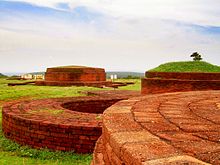
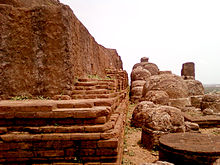

This is a list of Buddhist temples, monasteries, stupas, and pagodas in India for which there are Wikipedia articles, sorted by location.



Buddhist caves exist in following places in Goa:[ citation needed ]
Buddha images have been found in several places, and some temples, some are still in worship and are considered now as Hindu gods. Monasteries used to exist in many places, and it can be seen from the names of the modern villages. For example, Viharas have been found in modern Divachali or ancient Dipakavishaya, Lamgaon or ancient Lamagrama and many other places.[ citation needed ]

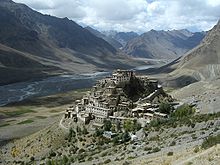




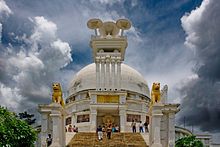


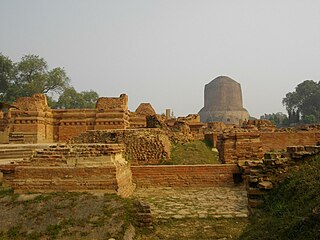
Sarnath is a place located 10 kilometres northeast of Varanasi, near the confluence of the Ganges and the Varuna rivers in Uttar Pradesh, India.
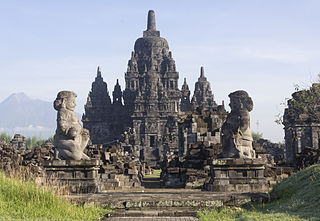
A Buddhist temple or Buddhist monastery is the place of worship for Buddhists, the followers of Buddhism. They include the structures called vihara, chaitya, stupa, wat and pagoda in different regions and languages. Temples in Buddhism represent the pure land or pure environment of a Buddha. Traditional Buddhist temples are designed to inspire inner and outer peace.
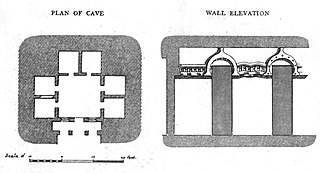
Vihāra generally refers to a Buddhist monastery for Buddhist renunciates, mostly in the Indian subcontinent. The concept is ancient and in early Sanskrit and Pali texts, it meant any arrangement of space or facilities for dwellings. The term evolved into an architectural concept wherein it refers to living quarters for monks with an open shared space or courtyard, particularly in Buddhism. The term is also found in Ajivika, Hindu and Jain monastic literature, usually referring to temporary refuge for wandering monks or nuns during the annual Indian monsoons. In modern Jainism, the monks continue to wander from town to town except during the rainy season (Chaturmas), and the term "vihara" refers to their wanderings.

A chaitya, chaitya hall, chaitya-griha, refers to a shrine, sanctuary, temple or prayer hall in Indian religions. The term is most common in Buddhism, where it refers to a space with a stupa and a rounded apse at the end opposite the entrance, and a high roof with a rounded profile. Strictly speaking, the chaitya is the stupa itself, and the Indian buildings are chaitya halls, but this distinction is often not observed. Outside India, the term is used by Buddhists for local styles of small stupa-like monuments in Nepal, Cambodia, Indonesia and elsewhere. In Thailand a stupa, not a stupa hall, is called a chedi. In the historical texts of Jainism and Hinduism, including those relating to architecture, chaitya refers to a temple, sanctuary or any sacred monument.
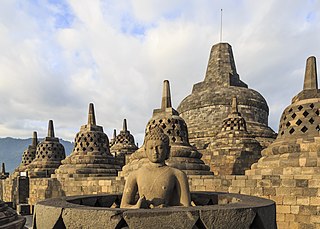
Buddhist religious architecture developed in the Indian subcontinent. Three types of structures are associated with the religious architecture of early Buddhism: monasteries (viharas), places to venerate relics (stupas), and shrines or prayer halls, which later came to be called temples in some places.
The Nava Vihāra were two Buddhist monasteries close to the ancient city of Balkh in northern Afghanistan. Historical accounts report it as flourishing as an important centre of Buddhism between the seventh and eleventh centuries CE. It may have been founded considerably earlier, perhaps in or after the reign of the Kushan emperor Kaniṣka, in the second century CE.

Indian rock-cut architecture is more various and found in greater abundance in that country than any other form of rock-cut architecture around the world. Rock-cut architecture is the practice of creating a structure by carving it out of solid natural rock. Rock that is not part of the structure is removed until the only rock left makes up the architectural elements of the excavated interior. Indian rock-cut architecture is mostly religious in nature.
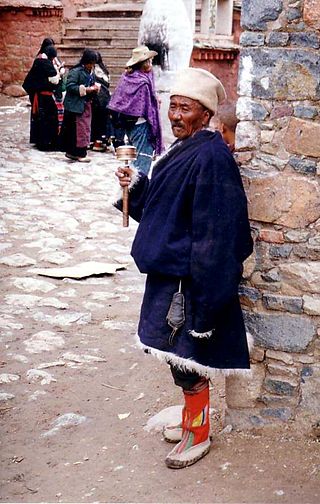
The most important places in Buddhism are located in the Indo-Gangetic Plain of southern Nepal and northern India. This is the area where Gautama Buddha was born, lived, and taught, and the main sites connected to his life are now important places of pilgrimage for both Buddhists and Hindus. Many countries that are or were predominantly Buddhist have shrines and places which can be visited as a pilgrimage.

In religion and spirituality, a pilgrimage is a long journey or search of great moral significance. Sometimes, it is a journey to a sacred place or to a shrine of importance to a person's beliefs and faith. Members of every major religion participate in pilgrimages. A person who makes such a journey is called a pilgrim.

Pushpagiri was an ancient Indian mahavihara or monastic complex located atop Langudi Hill in Jajpur district of Odisha, India. Pushpagiri was mentioned in the writings of the Chinese traveller Xuanzang and some other ancient sources. Until the 1990s, it was hypothesised to be one or all of the Lalitgiri-Ratnagiri-Udayagiri group of monastic sites, also located in Jajpur district. These sites contain ruins of many buildings, stupas of various sizes, sculptures, and other artifacts.
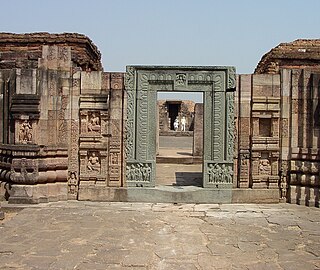
Ratnagiri is the site of a ruined mahavihara, once the major Buddhist monastery in modern Odisha, India. It is located on a hill in between the Brahmani and Birupa rivers in Jajpur district. It is close to other Buddhist sites in the area, including Lalitagiri and Udayagiri, and 100 km (62 mi) from the state capital Bhubaneswar and 70km from the former state capital Cuttack.
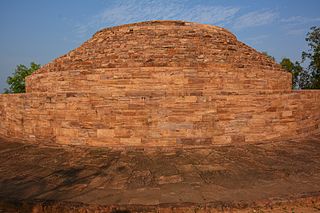
Lalitagiri is a major Buddhist complex in the Indian state of Odisha. The complex is home to stupas, 'esoteric' Buddha images, and monasteries (viharas), which is the oldest site in the region. Significant finds at this complex include Buddha's relics. Tantric Buddhism was practiced at this site.

According to the Mahāparinibbāṇa Sutta, after attaining parinirvana, the body of Buddha was cremated and the ashes divided among his lay followers.